Why is flexibility important in climbing?
It’s not a groundbreaking revelation that being flexible is really useful when it comes to climbing.
You only have to watch a short clip of a climber that is pushing their grade, or performing well in a competition, to see that having that extra mobility and associated strength through range can make a huge difference.
Having good flexibility and mobility can help to improve movement efficiency, allowing us to get our body closer to the wall; as well as enabling us to really utilise our lower body effectively. With improved efficiency, you can reduce your energy expenditure, helping you to fight for that extra move, or enabling an extra redpoint attempt. Not only that, but if your flexibility is poor, then you can end up overstraining to reach those more demanding positions, consequently putting yourself at increased risk of injury.
The Relationship Between Flexibility and Performance
The relationship between flexibility and performance is sport specific. There are certainly some sports where having stiffer muscles can positively impact performance, such as the impact of decreased flexibility on running economy.
However, flexibility plays a significant role in climbing across disciplines. It helps us to hit those more gymnastic climbing positions, such as placing a high heel on a steep boulder, bridging/stemming between perpendicular walls on a trad route and sinking into your hips to keep your body close to the wall on a sport climb.
Flexibility not only facilitates increased range of motion, but active mobility work can also improve your strength through that range.
You want your flexibility work to be specific to your climbing and flexibility goals, as discussed in this video. Here, Josh provides some ideas on setting appropriate flexibility goals and some examples of how to safely and effectively use weights to strengthen through the range.
Why is flexibility training great?
You may feel like you have reached a climbing plateau, but you’re reluctant or unmotivated to add a substantial bout of physical training to your schedule; it may be that this just isn’t practical or suitable at this time.
What’s great about flexibility and mobility work is that it often requires little time, can easily be completed at home and can be done during active rest days with minimal impact on your recovery.
For those of you that tend to shy away from doing any flexibility work, this is a great opportunity to introduce a novel training stimulus into your training routine. By stressing the system in ways which are new, we can expect to see greater adaptation and improvement.
If that isn’t compelling enough, completing regular flexibility sessions can have a really positive impact on day-to-day life, improving general mobility, mood and wellbeing. For more information about the importance of flexibility, with further explanation of how flexibility training can improve your strength, strength endurance, movement efficiency and even your repertoire of movement options, you may find this 3 part blog series on flexibility useful.
How do I get started with flexibility training?
So, you’ve read about why flexibility training is so important and decided you’d like to give it a go, but you have no idea where to start.
With a wealth of information out there, it can be hard to decide which exercises will be of most benefit to you and your climbing. But, Lattice are here to help with our FREE MyFlex Assessment.
What is the MyFlex Assessment?
The MyFlex Assessment is FREE and can be found here.
The assessment measures lower body mobility, using a battery of tests that take roughly 30 minutes to complete.
What sets aside the MyFlex assessment from other more generic flexibility measures, is that it draws upon sport-specific movement patterns of climbing and the subsequent demands on our body. The tests provide information on your mobility, relative to your anthropometry, taking into account your height, arm span and leg length.
Once you have completed the tests and submitted your results, your data is then compared to the data of other athletes of a similar climbing ability and anthropometry to you. This provides you with a more comprehensive understanding of your flexibility. It will help you to prioritise the particular muscle groups you need to for working towards your flexibility and climbing goals.
These results are often surprising, as an area of flexibility that you thought you excelled in, may actually turn out to be a significant area for development! (This happened to me, coach Jemma.🙂)
You don’t need much to complete the tests, but you will need a spacious floor area and some comfortable clothing.
You will also need a Flex Mat and Flex Block to complete the tests. These products can then be easily incorporated into subsequent flexibility sessions, with the added benefit of making your performance from session-to-session measurable.
What is the Flex Mat?
The Flex Mat can be purchased here and is a durable yoga mat that features a number of unique measurement systems to help you track your progress as you work towards your flexibility goals.
The cork mat is made from organic materials, making it a more sustainable option than similar, plastic-based products on the market and, for improved longevity, the measurement markings are laser engraved.
The mat has two angle finders, which are a great way of tracking progress in exercises such as Pancake Variations. The mat also has two measures along its length so that you can gradually and progressively increase the intensity of exercises, such as the Horse Stance.
See below how to use both of these exercises to help you improve your Side Split.
And the Flex Block?
Made from the same organic cork materials, the Flex Block has two linear, perpendicular measures. These scales can be a useful tool in monitoring progress, in areas such as the flexibility of the calf and mobility of the ankle.
The Flex Block also improves the diversity and appropriateness of your flexibility training sessions by offering additional support and challenge, as would a more traditional yoga block.
You can purchase a Flex Block here.
How can you use your test results?
Once you have completed the test, you will be sent out a report that summarises your performance across the following measures:
- Sit and Reach
- Side Split
- High Step
- Pancake
- Internal Rotation
- Drop Heel
For each measure, you will be given an indication of how you performed, relative to similar athletes on our database. You’re also provided a description as to which muscle groups you may need to prioritise working on and how this may be impacting your climbing.
You can then use these results to select specific stretches that will work your individual weaknesses.
To help you get started, here is an example of one stretch for each of the above-mentioned measures that you could incorporate into your flexibility route.
1. Sit and Reach
This test is used to measure flexibility in both your hamstrings and along the full posterior chain.
In climbing, flexibility in these areas can be helpful when it comes to placing high heel/toe hooks so that you can share the load placed on your upper body.
Stretch: Hamstring Stretch – Seated

Stretch one leg at a time. Use a band, belt or similar to help pull you deeper into a stretch if you can’t reach your foot.
Do NOT stretch to such an extent that you feel pain, pinching or discomfort in the joint.

2. Side Split
This test is used to measure flexibility in the hip abductors.
In climbing, flexibility in this area can be helpful when bridging/stemming between perpendicular walls and when it comes to really sinking into your hips to get your body close to the wall and improve movement efficiency.
Stretch: Horse Stance Iso – Bodyweight
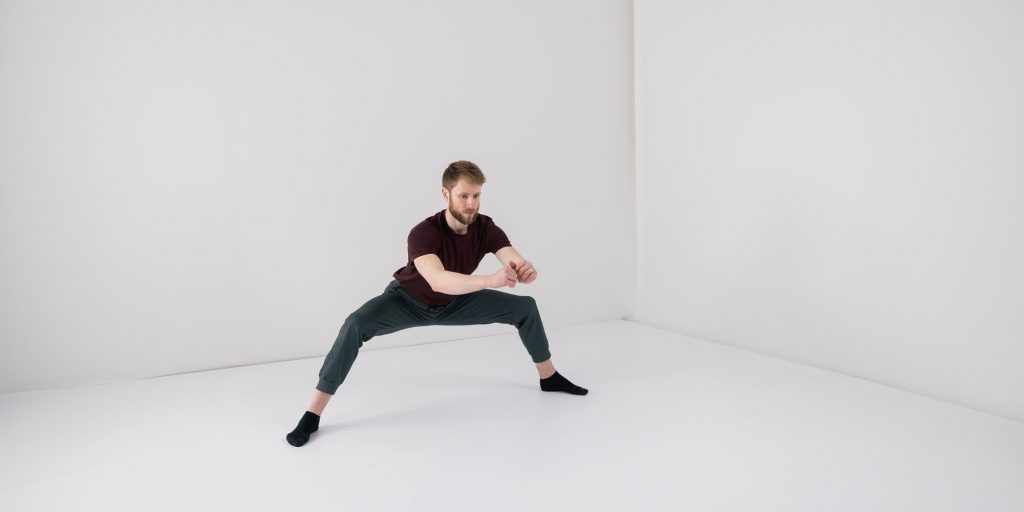
Standing in either a 5-step or 7-step width, squat down aiming to keep your torso upright and knees pulled apart. When your hips drop below your knees move to a wider stance.
Do NOT stretch to such an extent that you feel pain, pinching or discomfort in the joint.

3. High Step
This test is used to measure both hip flexion (lifting the knee upwards towards the chest) and hip extension (lifting the leg behind you, when standing or pushing the trunk forwards over the leg, as with a glute bridge).
In climbing, flexibility in these areas can be helpful when it comes to rocking over a highly placed foot.
Stretch: Butterfly Passive
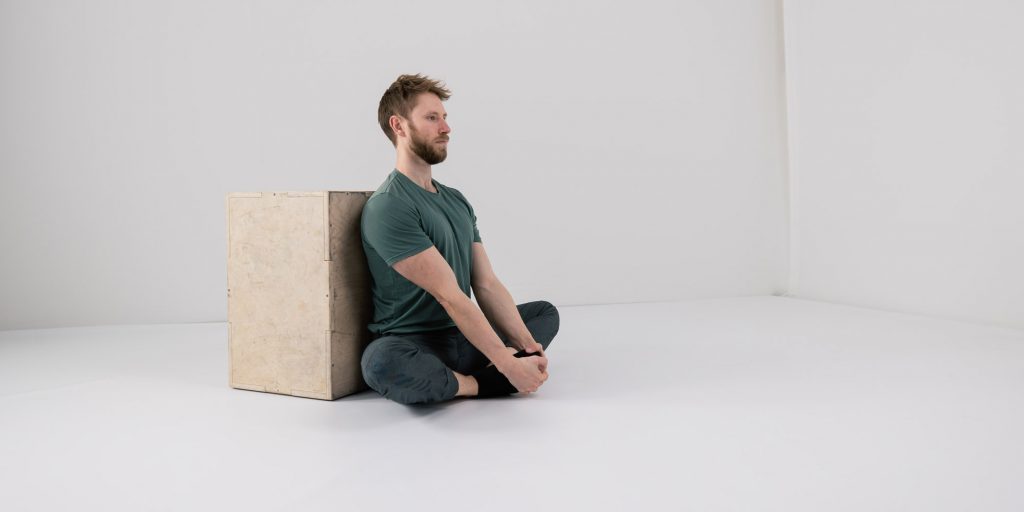
To be performed to build or maintain good range of motion around the hip joint. From a seated position up against a wall, pull your in towards your groin. Allow your knees to drop out to the side. Keep your bum on the floor and avoid any rounding in your lower and mid back.
Do NOT stretch to such an extent that you feel pain, pinching or discomfort in the joint.

4. Pancake
This test is used to measure flexibility in both your hamstrings and hip adductors.
In climbing, flexibility in these areas can be helpful when it comes to compression climbing where keep your body open and front-on is important.
Stretch: Pancake Standing
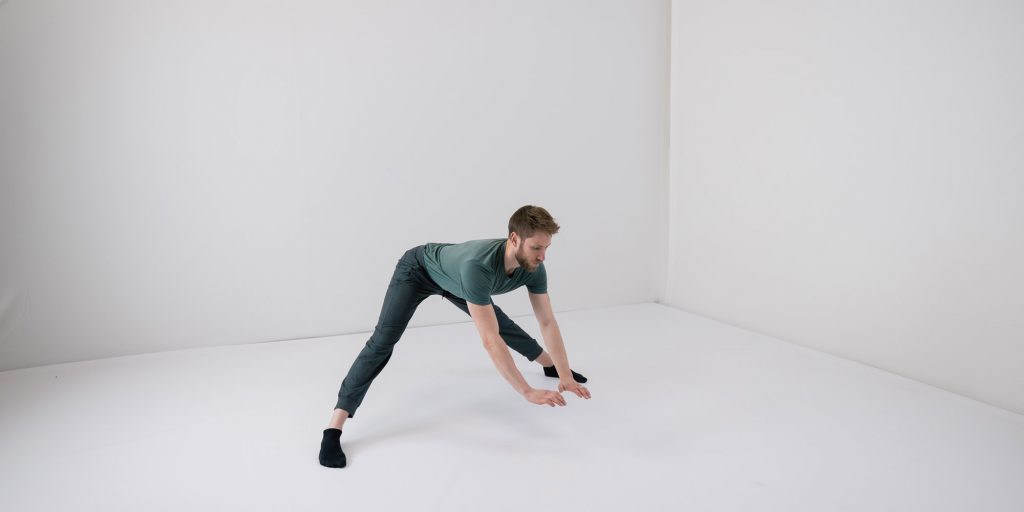
Stand with your feet far apart. At least 3x shoulder width. Bring your hip into an anterior pelvic tilt and slowly fold forwards. Keep your core and hip flexors engaged, tensing your quads to keep your knees locked. Fold down to your maximum depth and hold.
Do NOT stretch to such an extent that you feel pain, pinching or discomfort in the joint.

5. Internal Rotation
This test is used to measure flexibility in your external hip rotators.
In climbing, flexibility in these areas can be helpful when it comes to placing top knees and twisting the lower body in order to hit those more streamline positions.
Stretch: Clam
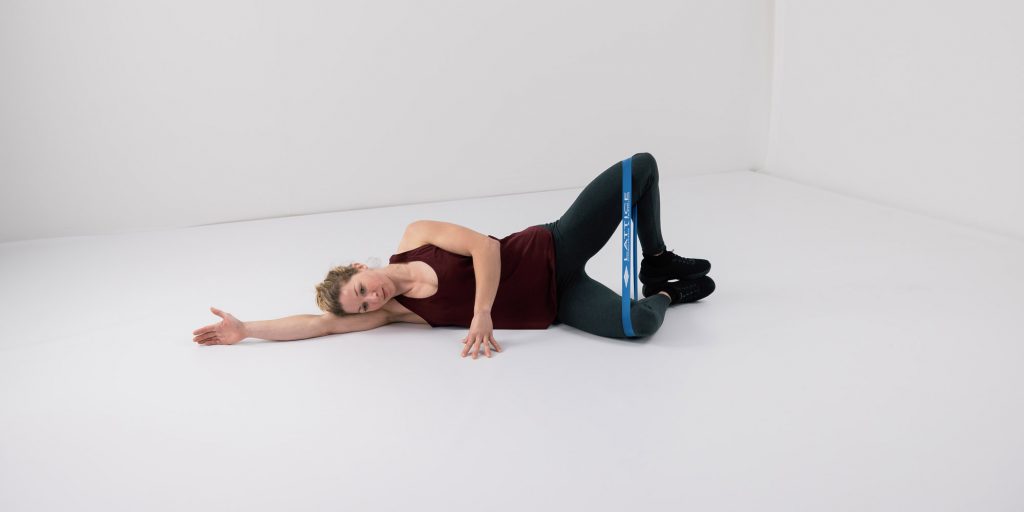
Laying on your side, place a resistance band around your legs. Just under the knee. Make sure you have enough tension so that when you fully open your hips you have to work hard to keep them open. Keep your feet together so that only your knees separate. Also try to keep a 90 degree bend in the knee.
Do NOT stretch to such an extent that you feel pain, pinching or discomfort in the joint.

6. Drop Heel
This test is used to measure flexibility in the ankles and muscles of the calf.
In climbing, flexibility in these areas can be helpful when it comes to effective smearing and placing knee bars.
Stretch: Fishermans – Passive
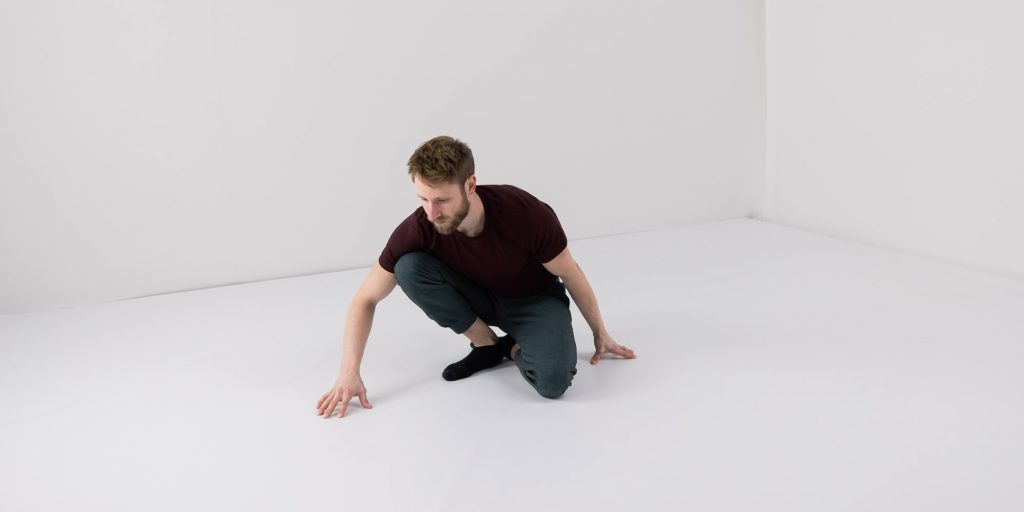
Kneeling with one foot in front, try to shift your knee as far over your toes as possible, without your heel lifting off the floor. You can lean into your thigh, or hold a weight on your knee to assist the stretch.
Do NOT stretch to such an extent that you feel pain, pinching or discomfort in the joint.

What now?
So, you’ve done the test and had a go at incorporating some of the exercises described into your training. But you’re not sure how else to further your performance.
No fear, the Lattice Flexibility Plan is here!
Flexibility Plans
All of our flexibility plans are inclusive of a 1:1 consultation with one of our specialist flexibility coaches. These take place during the Discovery Phase of the plan. During this period, you will also be taught 6 key flexibility lessons that will help you on your journey to improved flexibility.
Once you’ve completed this phase, you’ll receive your personalised plan, tailored towards the results of your assessment, as well as your climbing and flexibility goals. Your plan will feature detailed sessions to complete each day.
Your coach will provide a sample weekly schedule to demonstrate how best to organise your flexibility sessions around your climbing and other obligations.
You will continue to work with your flexibility coach for the duration of your plan, with the opportunity to ask questions and seek further guidance along the way. You will also gain access to video-led tutorials to help with the process of learning new exercises.
Plans last for a minimum of 6 months, with 6 monthly subscription payments of just £60.00.
Plans can be purchased here! (Get them quick whilst places last!)
The number of flexibility services currently on offer are suitable for climbers of all abilities!
Whether you’re psyched to improve your flexibility so that you can send your project by working 1:1 with a flexibility coach…
… or if you just want to dip your toe into the flexibility world by completing a free assessment…
There’s something for everyone!
Contact a member of the team today here or by emailing [email protected] for more information.





